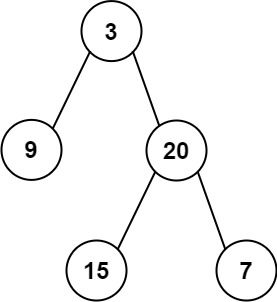Sum of left leaves
# Definition for a binary tree node.
# class TreeNode:
# def __init__(self, val=0, left=None, right=None):
# self.val = val
# self.left = left
# self.right = right
class Solution:
def sumOfLeftLeaves(self, root: Optional[TreeNode]) -> int:
if root is None:
return 0
if root.left is None and root.right is None:
return 0
leftVal = 0
if root.left and not root.left.left and not root.left.right:
leftVal = root.left.val
else:
leftVal = self.sumOfLeftLeaves(root.left)
rightVal = self.sumOfLeftLeaves(root.right)
return leftVal + rightVal
Sum of Left Leaves
Given the root of a binary tree, return the sum of all left leaves.
A leaf is a node with no children. A left leaf is a leaf that is the left child of another node.
Example 1:

Input: root = [3,9,20,null,null,15,7] Output: 24 Explanation: There are two left leaves in the binary tree, with values 9 and 15 respectively.
Example 2:
Input: root = [1] Output: 0
Constraints:
- The number of nodes in the tree is in the range
[1, 1000]. -1000 <= Node.val <= 1000
